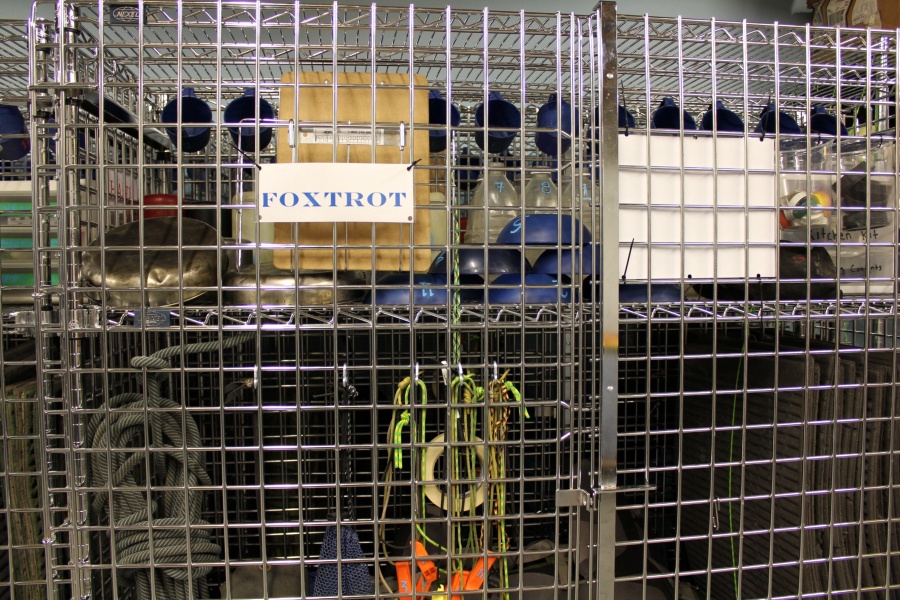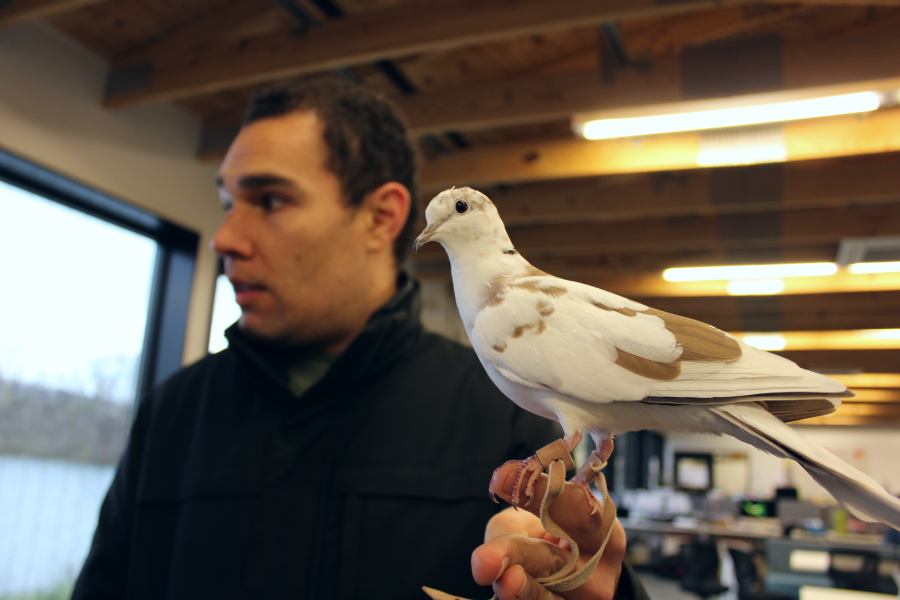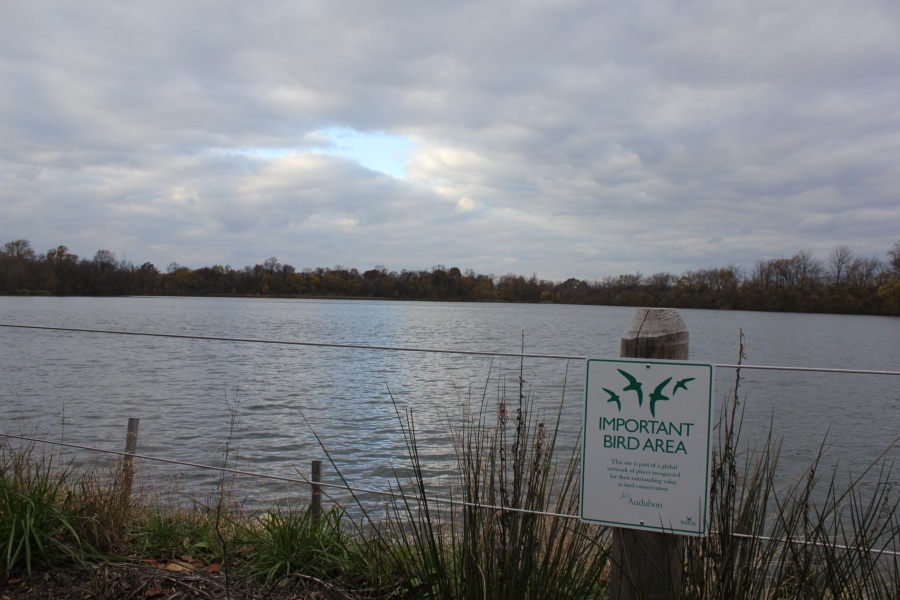How to Get to the Discovery Center and Philly’s Idyllic Hidden Reservoir
The gates to Philly’s man-made lake nestled away in the woods have reopened after nearly 50 years — here’s what to know before you go, when to go, and how to get there.
Approaching the tall, ornate gates of the newly opened Discovery Center, you can’t miss what employees refer to as the “ah-ha moment.”
The long pathway to the building’s main entrance leads visitors to a sudden, striking view of the center’s reservoir, a pristine, 37-acre body of water that was closed to the public for nearly 50 years.
In September, the reservoir was made accessible once again with the opening of the brand-new Discovery Center. The building serves as the home for a first-ever collaboration between the National Audubon Society, a nonprofit dedicated to bird and wildlife conservation, and the experiential education program Outward Bound.
Framed by the center’s sleek architecture and encircled by dense woodlands, the reservoir has the ability to make you feel like you’re far, far outside Philadelphia city proper — and instead maybe at some kind of lakeside wellness retreat nestled in a New England forest.
This just-revealed, one-of-a-kind Philly resource is absolutely worth a visit. To make your trip easier, here’s information on everything to know before you go, when to go and how to get there.
What to Know
The East Park Reservoir was built in 1889. For decades, it functioned as one of the city’s main water sources and a beloved recreation area for nearby residents. (Staffers say City Council President Darrell Clarke, who grew up in the neighborhood, has affectionally recalled running around the man-made lake as a kid.)
In 1970, when the reservoir’s water supply was no longer needed, the Philadelphia Water Department closed the site to the public. Because of its seclusion over the years, the lake has naturally developed into an migratory oasis for more than 100 species of birds.
Now, a partnership between the Philadelphia Water Department, city officials, Audubon and Outward Bound has opened the reservoir in a new capacity — and one that aligns with the mission to preserve the birds’ habitat.
Both Outward Bound and Audubon will use the center for educational purposes. For Outward Bound, that means partnering with nearly 150 public, private and charter schools in the region to lead children on experiential backpacking, canoeing and rock climbing trips throughout the area, while using the Discovery Center as a sort of home base.
As the oldest network of outdoor education schools, Outward Bound leads students on expeditions far and wide. In the Philadelphia area, pupils travel to and through the Delaware Water Gap, as well as parks in Pennsylvania and New Jersey, like Michaux State Forest and the storied Pine Barrens, respectively.
With the Discovery Center, for the first time ever, the organization will be able to keep trip necessities (pots, pans, ropes, safety equipment, life vests, whistles, backpacks and more) at one site, where it can also host day or weekend trips that might include students camping in the woods around the reservoir, climbing the center’s forthcoming rock wall, canoeing on the calm, quiet water, or trying their hand at the center’s intimidating ropes course.

Outward Bound provides gear and other equipment for students, which is stored in lockers inside The Discovery Center. | Photo by Claire Sasko
After students accomplish longer trips — usually lasting about seven days — the center allows Outward Bound employees to host barbecues or other events to celebrate.
Audubon, on the other hand, will use the facility largely for research and conservation projects. The organization will offer educational programs to guests (of all ages) who want to learn more about the center’s bird population and natural environment preservation efforts, whether through weekly bird walks around the reservoir or relaxed conversations with staff. They’ll also monitor the water for birds’ nesting sites and be sure to steer campers, canoers or hikers clear of those areas, so birds feel comfortable returning.
Maybe the best part of Audubon, however, is JJ — the ring-necked dove they keep in the office they share with Outward Bound.

JJ, the ring-necked dove, with Audubon employee Damien Ruffner. | Photo by Claire Sasko
When to Go
During the winter, the Discovery Center is open to the public three days a week — between 10 a.m. and 4 p.m. on Thursday, Friday and Saturday. Starting in the spring (May 1st, to be exact) the center will be open five days a week — during the same hours, Wednesday through Sunday.
The best time to visit is during one of the Discovery Center’s planned events, which included weekly guided walks around the reservoir. The walks are free and relatively easy, just over a mile stroll out and back around the reservoir. The walks, which are typically on Thursdays from noon to 2 p.m., feature guides who provide information on the history of the reservoir and its plant and animal life, as well as various topics, depending on the day.

Photo by Claire Sasko
Similarly, Audubon holds bird walks led by a local ornithologist at least once a month.
The center also organizes monthly Discovery Days, which feature team games and challenges, bird walks, arts and crafts, aerial team demonstrations on the ropes course and more. The next Discovery Day, which is scheduled for December 15th, will be holiday-themed and feature a bazaar with local vendors.
In addition to those regular events, the Discovery Center hosts monthly community and coalition meetings and activities like nature yoga, senior dance classes and more. On November 3rd, for example, Activate Philly held a free Pokémon Go day, which included temporary stops for the popular game/phone app, as well as live music, vendors, virtual reality experiences, wine tasting and more.
Otherwise, when the center is open, you’re free to stroll around the reservoir and chat with Audubon and Outward Bound employees as you wish. However, before you go, you should know that there are a few things you can’t do at The Discovery Center.
The first is canoeing, which is reserved specifically for Outward Bound enrollees and monitored closely by Audubon employees to ensure that bird habitat isn’t being disturbed. The second is swimming, which is strictly against the rules. (There were a few drownings at the reservoir in the past.) The third is using the ropes course, which large groups (like schools, community groups or businesses) must reserve in advance. (Trust me, that thing requires a lot of teamwork.)

The ropes course at The Discovery Center. | Photo by Claire Sasko
Still, it’s peaceful and satisfying just to walk around the reservoir, stare at the water and enjoy the quiet. It’s a place to go to calm your head and ease your mind — and that’s hard to come by in the hustle and bustle of the city.
Audubon and Outward Bound employees both stress that if you’re looking for fast-paced entertainment, this isn’t the place. For that kind of experience, check out the zip line and ropes course nearby at Treetops Quest, located at 51 Chamounix Drive in West Fairmount Park. (And did you know you can canoe on the Schuylkill River in the warmer months?)
How to Get There
There are a few ways to get to the Discovery Center. First things first, the address is 3401 Reservoir Drive. If you’re driving, rest assured that parking is easy — there’s a parking lot just outside, across from the frisbee golf course. (What, you didn’t know Fairmount Park had a frisbee golf course?)
From the parking lot, just head up the long walkway to the Discovery Center entrance, until you hit the “ah-ha” moment mentioned earlier.
If you’re taking public transit, your best bet is to use Google Maps to figure out the quickest way to the Discovery Center. You can find the address here, to make the process easier. But we’ll provide some tips below anyway.
If you’re taking the bus, there are a few stops in walking distance from the Discovery Center. The closest are 33rd and Oxford streets, which you can access with on the route 32 bus, or 33rd Street and Cecil B. Moore Avenue, which you can get to on the route 3 bus. The route 48 bus will let you off at 29th and Oxford streets, which is about a 12-minute walk away from the center.
If you’re taking the trolley (which is helpful if you’re coming from West Philadelphia), opt for route 15, which will let you off at Girard Avenue and 31st Street, about a 17-minute walk from Discovery Center.
Unfortunately, there are no subway stops within a reasonable walking distance of the Discovery Center.
Other options for getting to the Discovery Center include Uber or Lyft. Or, if you’re looking for a little workout, consider renting a bike from Indego. There’s a station at 33rd Street and Reservoir Drive, just a five-minute walk from the Discovery Center. Plus, you can take the bike around Fairmount Park before or after your visit.
Any other questions about the Discovery Center? Check out its website.


